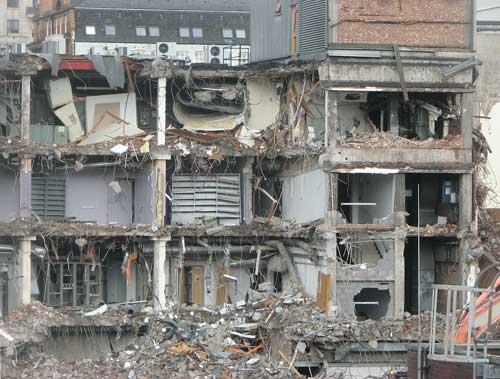With the move to Salford Quays complete, 2012 sees the end
of New Broadcasting House, Manchester. A sad sight for many staff, some of
whom spent their whole BBC life in this building. Roger Dowling took the photos.
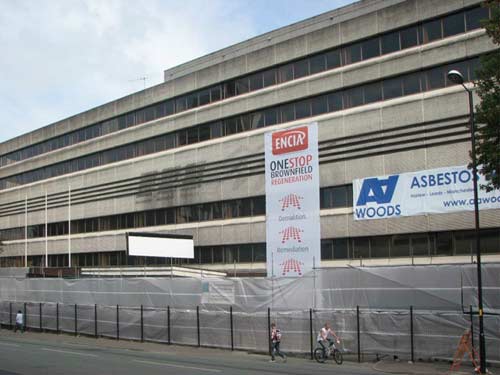
The front of New Broadcasting House facing onto Oxford Road. The shape of the BBC logo can be made out.
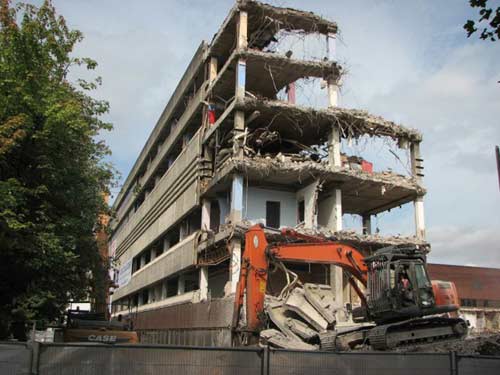
Looking along the front of the building from Brancaster Road.
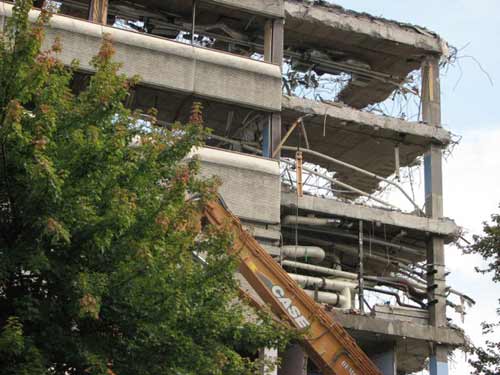
Again from Oxford Road. The third floor of NBH contained all the plant for air-conditioning etc., hence all the plumbing.
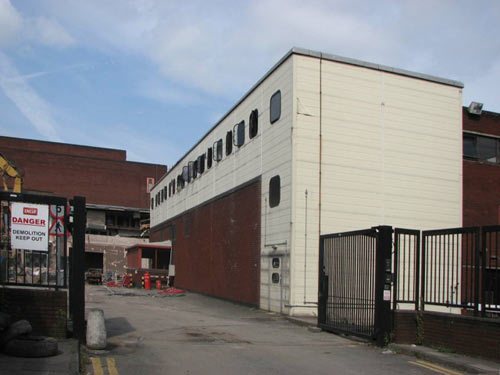
The entrance to the Access Yard (also called the Top Yard) from Brancaster Road. The building on the Right was nicknamed "The Belgrano" because of the porthole like windows in the walls and doors - it was built at in the 1980's around the time of the Falklands war. Little did we think the building would have an even shorter life than the ship of the same name.
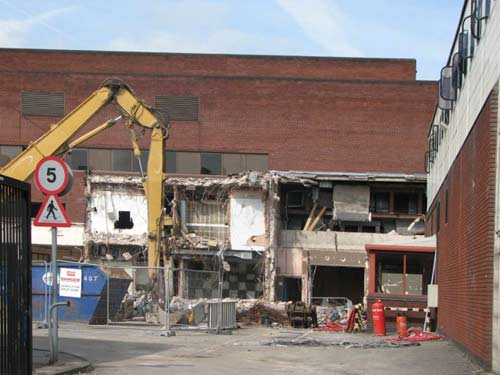
Looking in through Access Yard Gate. Demolition begins on part of the building containing Studio B, Home of Northwest Tonight TV Studio.
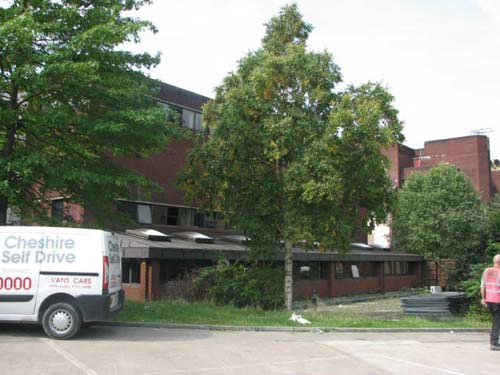
The Belgrano from the OB Yard (also called the Bottom Yard). The single story building in the foreground was office space and has been home to Radio, and TV Studio and OB Scheduling and more recently it served as part of the News Room.
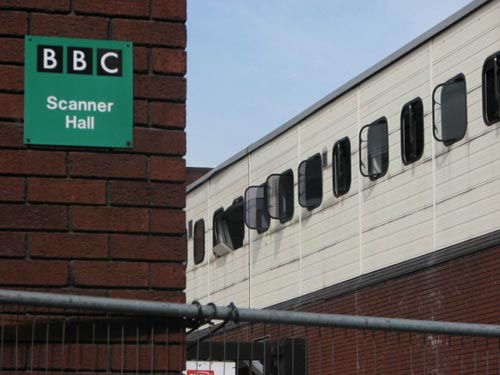
The corner of the "Scanner Hall", once home to BBC North TV OB fleet (TV OB Production vehicles are known as Scanners). This building was later converted to office space when the Manchester TV OB unit was relocated to London.
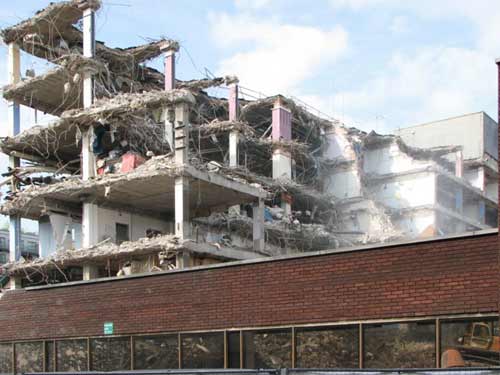
In foreground are the original Scanner Hall offices, facing Brancaster Road. The door visible on the second floor of the main building, (just above the brickwork) used to be the Radio 1 office, home to the Mark and Lard programme.
Roger took the next photos on a later visit.
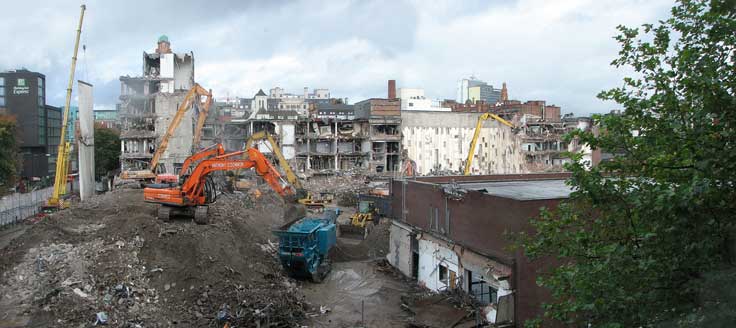
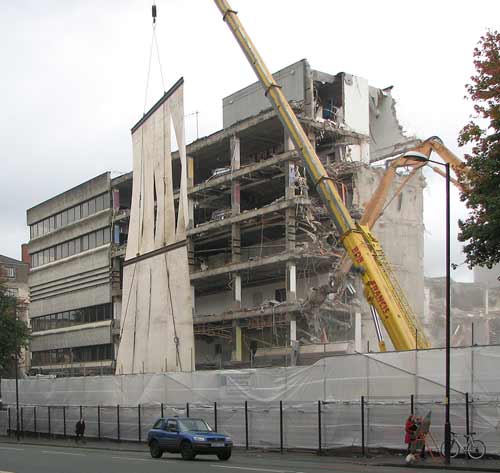
right: Demolition passes the centre section on Oxford Road.
Looking NW along Oxford Road. Little remains of the building’s interior that is recognisable.
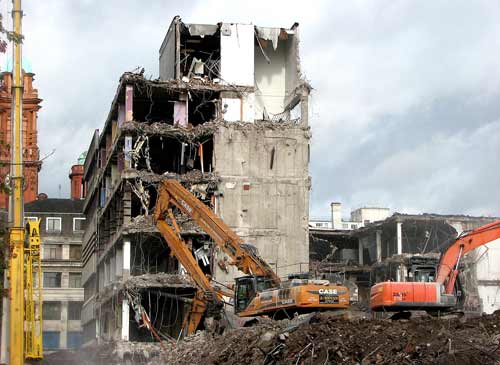
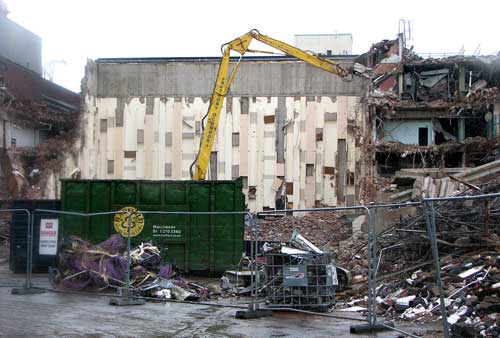
Just a single wall of Studio 7 (the orchestral studio) is still standing. The rectangular acoustic absorbers can be seen attached to the wall of what was once the largest purpose built classical recording space in the UK outside of Abbey Road Studio 1.
The remains of shelving in Part of the Reference library on floor 2 and some 19” equipment bays in a first floor equipment room await their fate.
